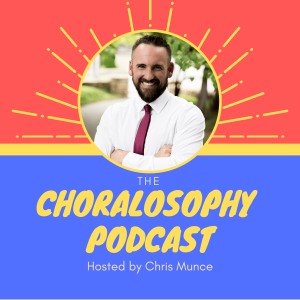
Episode 201: Music is Movement with Mark Changizi
 2024-06-06
2024-06-06
Cognitive scientist, Mark Changizi joins me this week for a fascinating exploration into the hardware and software that allows humans to understand, interpret and make sense out of music. In his book “Harnessed,” he makes the case that human speech has been very specifically “designed” to harness the sounds of nature, sounds we’ve evolved over millions of years to readily understand. Long before humans evolved, mammals have learned to interpret the sounds of nature to understand both threats and opportunities. Our speech—regardless of language—is very clearly based on the sounds of nature.
Even more fascinating, Changizi shows that music itself is based on natural sounds. Music—seemingly one of the most human of inventions—is literally built on sounds and patterns of sound that have existed since the beginning of time.
Tune in, and have your thinking stimulated and challenged. Then, weigh in yourself on Facebook in the Choralosophers group or over on choralosophy.substack.com.
For future rehearsal clips, find me on TikTok, Insta and FB!
MARK CHANGIZI is a theorist aiming to grasp the ultimate foundations underlying why we think, feel and see as we do. His research focuses on “why” questions, and he has made important discoveries such as on why we see in color, why we see illusions, why we have forward-facing eyes, why the brain is structured as it is, why animals have as many limbs and fingers as they do, why the dictionary is organized as it is, why fingers get pruney when wet, where emotional expressions came from, and how we acquired writing, language and music.
He attended the Thomas Jefferson High School for Science and Technology, and then went on to the University of Virginia for a degree in physics and mathematics, and to the University of Maryland for a PhD in math. In 2002 he won a prestigious Sloan-Swartz Fellowship in Theoretical Neurobiology at Caltech, and in 2007 he became an assistant professor in the Department of Cognitive Science at Rensselaer Polytechnic Institute. In 2010 he took the post of Director of Human Cognition at a new research institute called 2ai Labs, and also co-founded VINO Optics which builds proprietary vein-enhancing glasses for medical personnel. He consults out of his Human Factory Lab.
He has more than three dozen scientific journal articles, covered in thousands of newspaper and magazine articles. He regularly keynotes at both scientific events and at art galleries and museums, and has appeared on many television shows, including regular appearances on Discovery Channel’s Head Games and National Geographic’s Brain Games. TED has featured him in three areas of his research, namely illusions, color vision, and pruney fingers. He curated an exhibition and co-authored a (fourth) book — ON THE ORIGIN OF ART (2016), by Steven Pinker, Geoffrey Miller, Brian Boyd & Mark Changizi — at MONA museum in Tasmania in 2016 illustrating his “nature-harnessing” theory on the origins of art and language.
Paul Rudoi and MANY more.
He has written three other books on his research, THE BRAIN FROM 25,000 FEET (2003), THE VISION rEVOLUTION (2009) and HARNESSED: How Language and Music Mimicked Nature and Transformed Ape to Man (2011). He is working on his fifth non-fiction book, this one on emotions and facial expressions, called EXPRESSLY HUMAN: Decoding the Language of Emotions. He has also written a novel, called HUMAN 3.0, about what’s next, after humans, extending his nature-harnessing principles into the future.
Choralosophy Podcast (@choralosophy) • Instagram photos and videos
- Car Thoughts
- Choir Director Probs
- Choralosophy Book Club
- Chris Munce
- Community
- Covid Conversations
- Educational Philosophy
- Human Diversity
- Instruction and Assessment
- International
- Lori Sonnenberg
- Oxford Series
- Podcasts
- Politics and Current Events
- Student Perspectives
- Uncategorized
More Episodes
 2024-10-11
2024-10-11
Create your
podcast in
minutes
- Full-featured podcast site
- Unlimited storage and bandwidth
- Comprehensive podcast stats
- Distribute to Apple Podcasts, Spotify, and more
- Make money with your podcast
It is Free
- Privacy Policy
- Cookie Policy
- Terms of Use
- Consent Preferences
- Copyright © 2015-2024 Podbean.com





